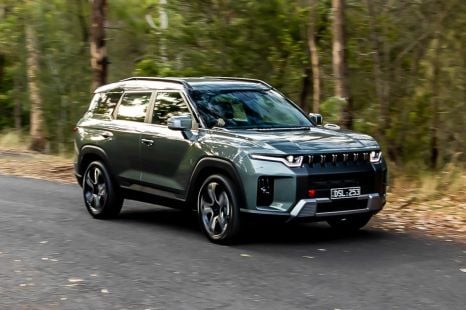

Matt Campbell
2026 KGM Torres Hybrid review
38 Minutes Ago
After recent price cuts, the Mach-E Premium shapes as the pick of the range. But, it's still easy to lose it in a sea of rival electric SUVs.
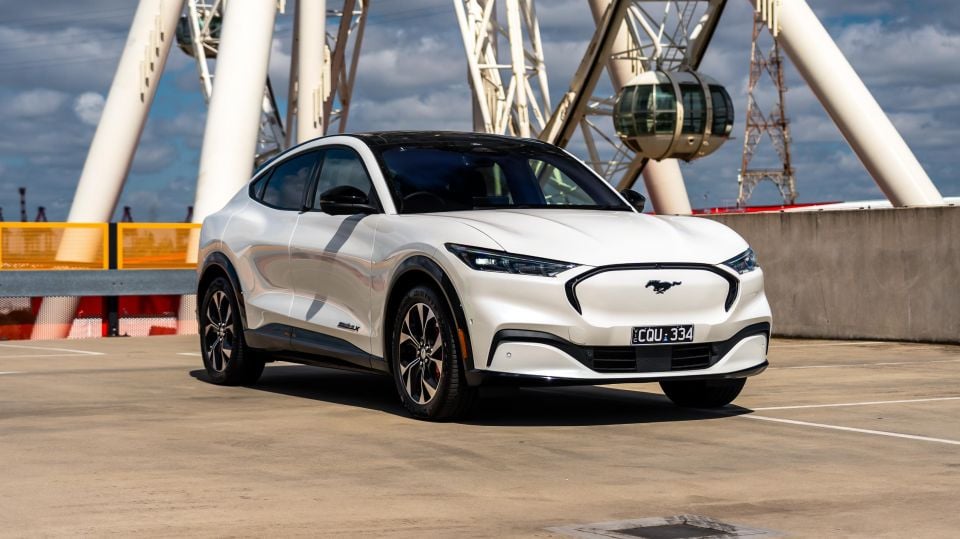
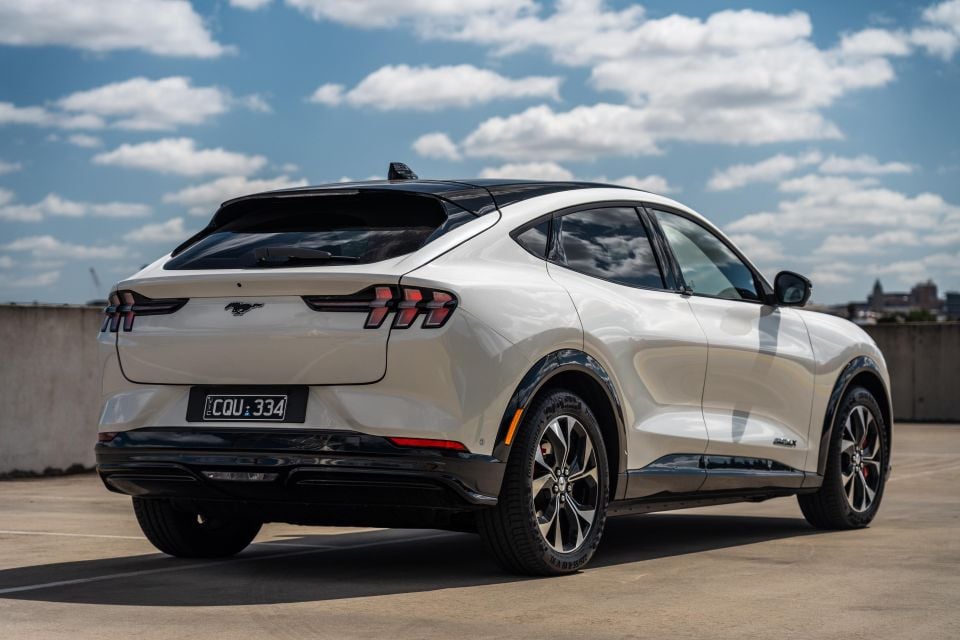

Marketplace Editor

Marketplace Editor


Marketplace Editor

Marketplace Editor
Where expert car reviews meet expert car buying – CarExpert gives you trusted advice, personalised service and real savings on your next new car.
A Mustang by any other name would be just as…? Erm…

The 2024 Ford Mustang Mach-E has been dividing opinion since birth. It is something of an answer to the ever-popular Tesla Model Y, but wears the name and branding of one of the Blue Oval’s most iconic sports cars known for its blaring V8 engines.
It was also a late arrival to the Australian market. The pony-badged EV became Ford’s first all-electric passenger vehicle in Australia when it landed last year, but had been on sale in Europe and North America for years.
Ford has also had to adjust pricing within months of the Mach-E going on sale. The range received price cuts of up to $7000 shortly after first vehicles started hitting showrooms – an admission of not reading the market, perhaps?
But let’s not get bogged down in negativity. The Mach-E is still a cool thing, and if thought of as a sporty electric crossover rather than an actual successor to the real Mustang, it might have something going for it.
Here on test we have the 2024 Ford Mustang Mach-E Premium, the mid-spec model which bisects the price-leading Select (from $72,990) and the go-fast GT flagship (from $104,990) – at $86,990 plus on-roads.
Could this be the sweet spot of the range? And does Ford’s offering in an increasingly evolving and competitive space do enough to differentiate itself from the leaders in all-electric motoring?
Ford Australia quickly dropped the Mach-E’s pricing shortly after it went on sale in Australia, with the mid-spec Premium on test getting a $4600 discount to $86,990 before on-road costs.
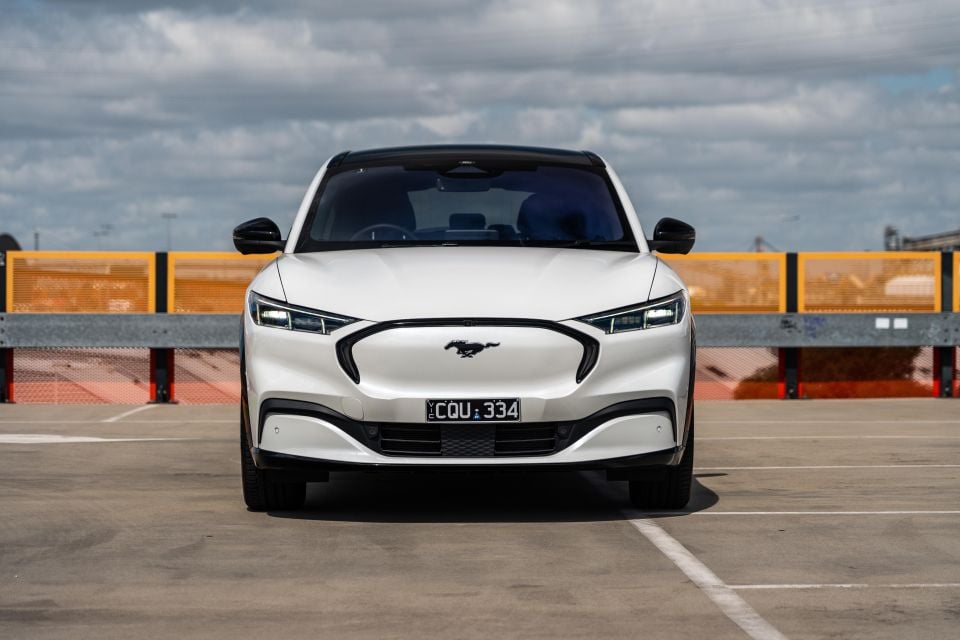
Ford Mustang Mach-E pricing:
Prices exclude on-road costs
To see how the Mustang Mach-E compares to its rivals, compare it to its rivals using our comparison tool.
Buy your new car without the stress. It's fast, simple and completely free.

Great service from Travis and team, second time I have used this business would not hesitate to recommend them to anyone
Craig C.
Purchased a Ford Ranger in Sunshine Coast, QLD
CarExpert helped Craig save thousands on his Ford Ranger, now let us save you on your next new car.
Find a dealThe Mach-E’s cabin is a bit of a departure from Fords of old, with a very minimalist and display-heavy design. It’s accessed by funny touch-operated e-latches in place of conventional handles – seems a bit naff to me.
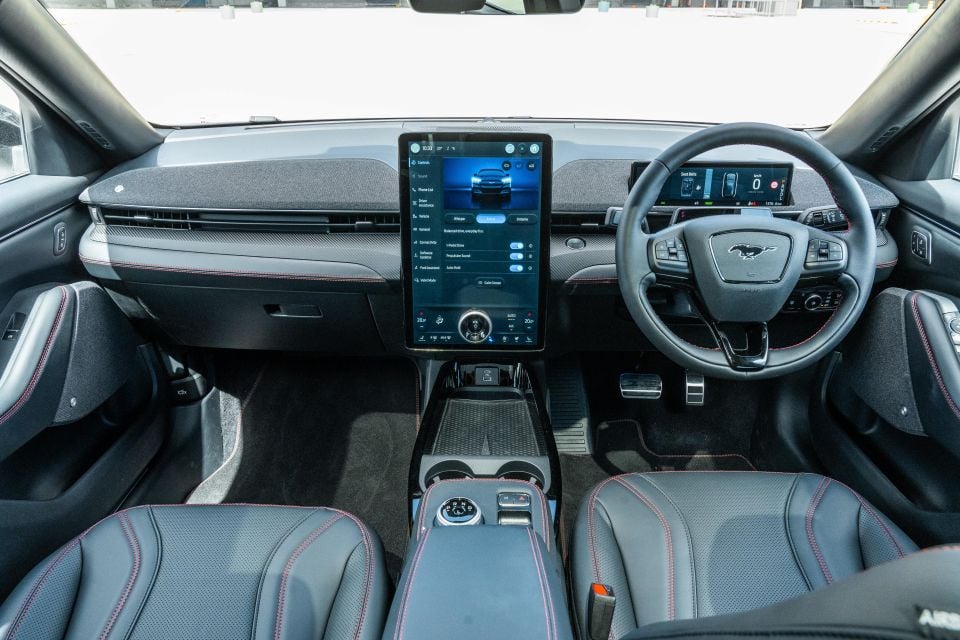
Where the exterior has very obvious links to the Mustang pony car, the interior looks more generic and in line with the likes of the Escape and Puma. The Select’s black ‘Sensico’ leatherette trim and red contrast stitching could be straight out of Ford’s ST-Line models, for example.
There’s a big 15.5-inch portrait-oriented touchscreen running Ford’s latest SYNC 4 infotainment system, and will be familiar to anyone that has driven a current Ranger or Everest. The main difference between this and other Ford models is the integrated rotary dial for the volume control.
Ahead of the driver there’s a slim 10.2-inch digital instrument cluster that does away with conventional dial displays and the like, rather showing key information in a more pared back and minimalist way. It’s similar to what we’ve seen out of the newest Volvo and Volkswagen EVs.
The Mach-E’s steering wheel looks very similar to the standard Ford rim that we’ve seen in the brand’s passenger car range, with chunky multifunction buttons and toggle switches for adjusting the cruise control and audio volume.
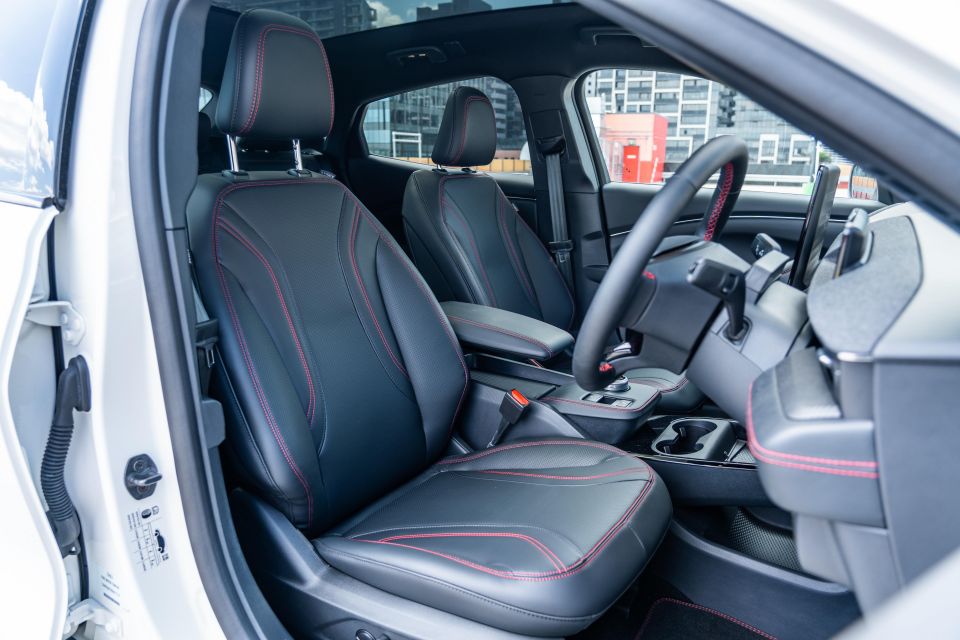
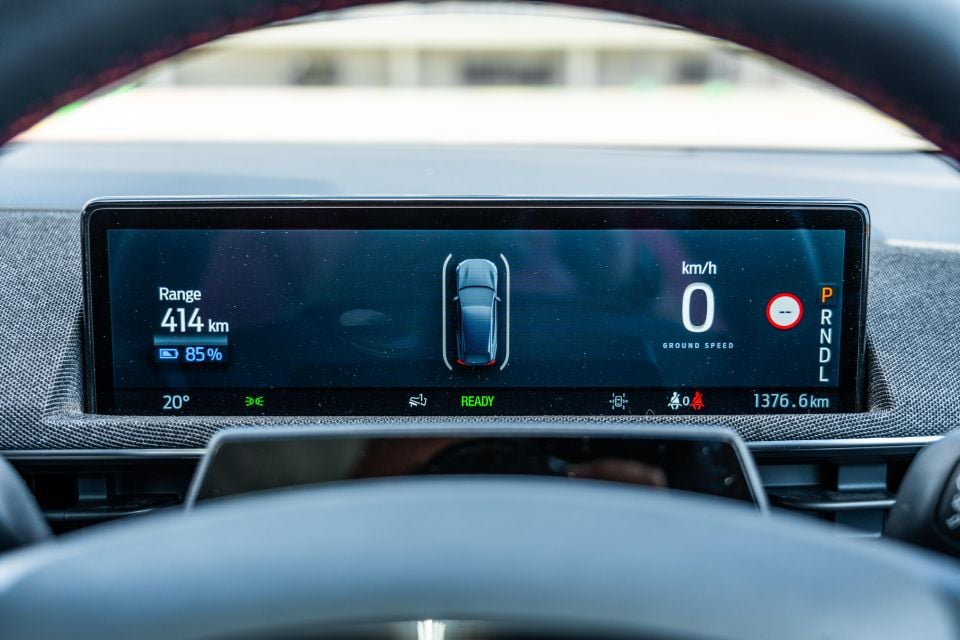
Comfort up front is pretty good, with a soft and squidgy feel to the seats but good support from the backrest and base. However, I will note there’s pretty limited bolstering which means you can slide around a bit in corners which isn’t very in keeping with the Mustang Mach-E’s more athletic pitch.
The overall ambience and perception of build quality is pretty good, though it’s a little austere and somewhat generic. Like I mentioned earlier, there’s a distinctly Ford look and feel, but it’s not really recognisable as a Mustang.
I like the high ratio of soft-touch materials, and the contrast red stitching adds a nice pop of colour. The funky grey cloth trimming across the dashboard is also a nice touch – though the option of a lighter interior like there is in the US would help liven it up a bit.
The open console design means there’s a big shelf for your phone and other belongings, while the rotary gear selector and electric park brake switch are conveniently placed right ahead of the armrest. The soft trim and red stitching extends to parts of the section, too.

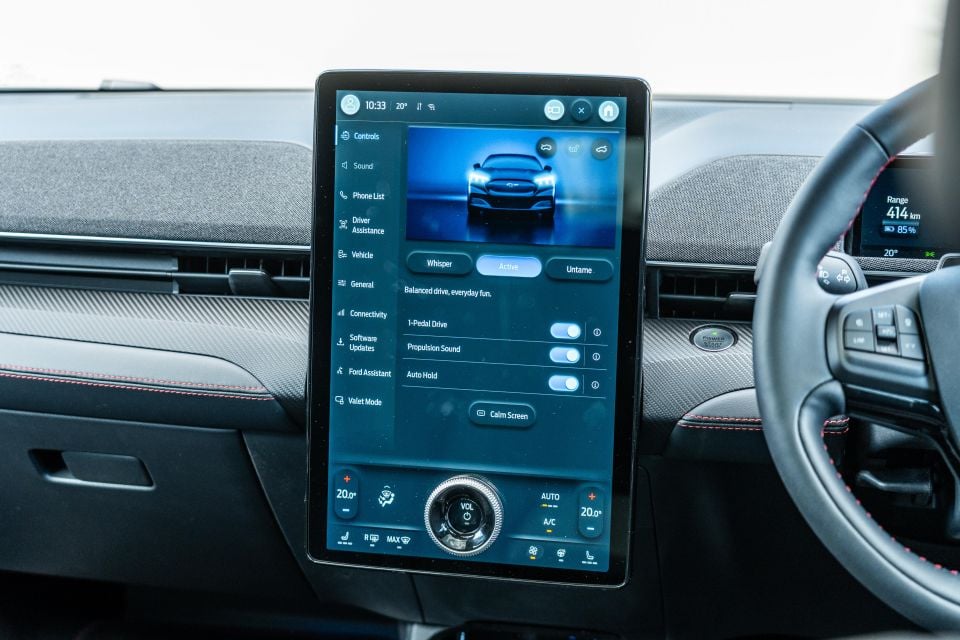
Using the big touchscreen is easy enough, as the SYNC 4 interface is one of the easier infotainment systems to use with logical menus and good response.
It feels slightly offset in the wrong direction, however. Perhaps something to do with its left-hand drive conception. At times you feel as if the screen is facing the passenger more than the driver.
The Mach-E’s infotainment system is well featured with FordPass Connect online and remote services, embedded satellite navigation, wireless Apple CarPlay and Android Auto (which worked really well), as well as DAB+ radio.
Also standard is a 10-speaker B&O sound system, which worked pretty well in our experience. While it offers clear audio with the ability to dial up some thumpy bass, there are audio systems offered by rivals with higher speaker counts and more immersive sound experiences.
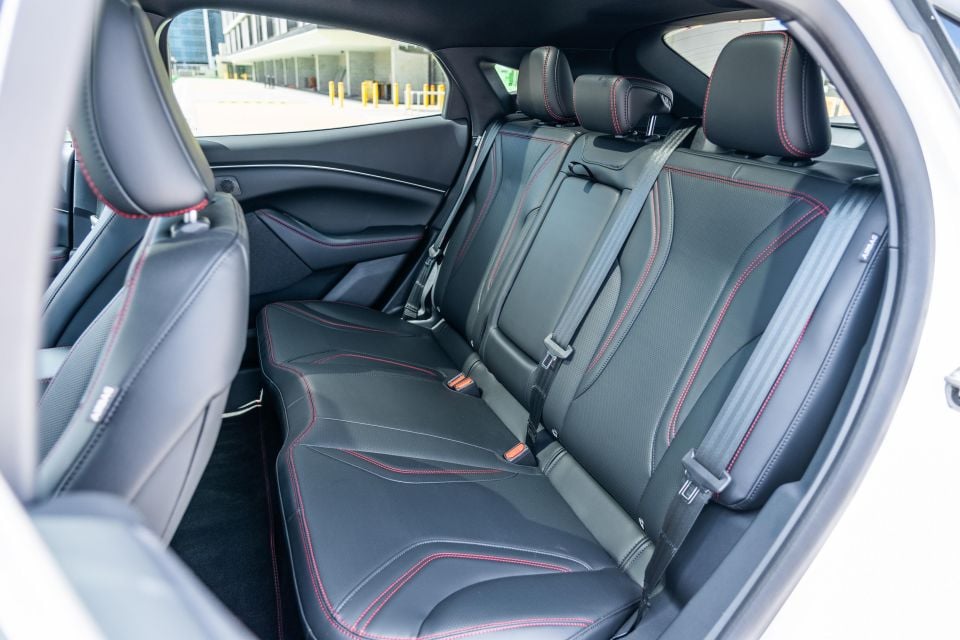
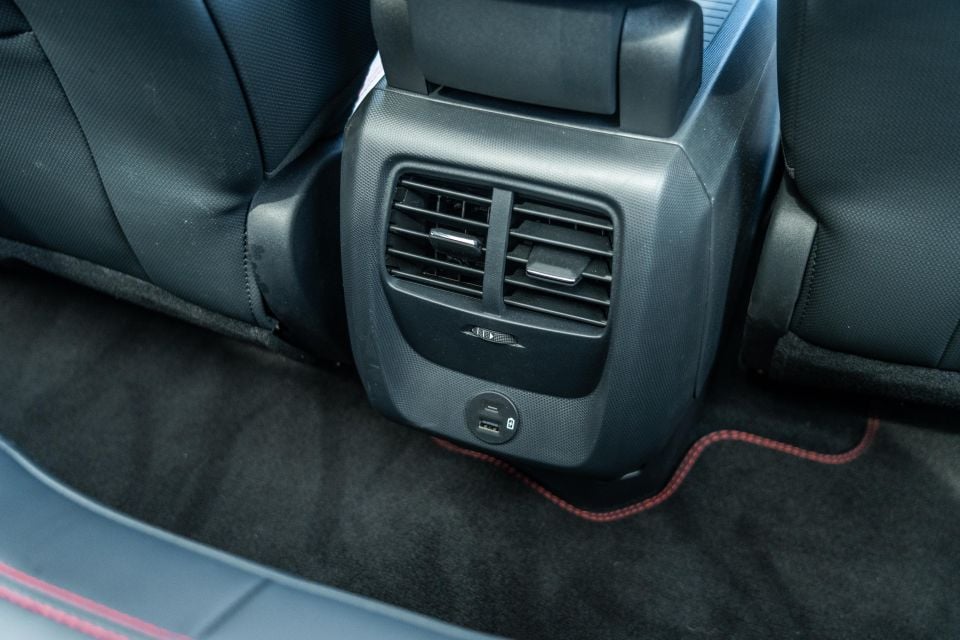
The rear seat offers a flat base as to not have the middle position too raised, and overall accommodation is decent – just watch your head on that sloping window frame as you’re hopping in.
Leg, knee and toe room is all good enough, even behind taller drivers. That sloping roofline may have you thinking there isn’t much headroom, but Paul and I at 6’1 fit fine back there, even if the raised floor gives you a bit of a knees up feeling.
Amenities include directional air vents – but no extra zone of climate controls – as well as USB-A and -C ports behind the centre console. There’s a fold-down centre armrest with extra cupholders too.
All models also have three top-tether and two ISOFIX anchor points for child seats in the second row.
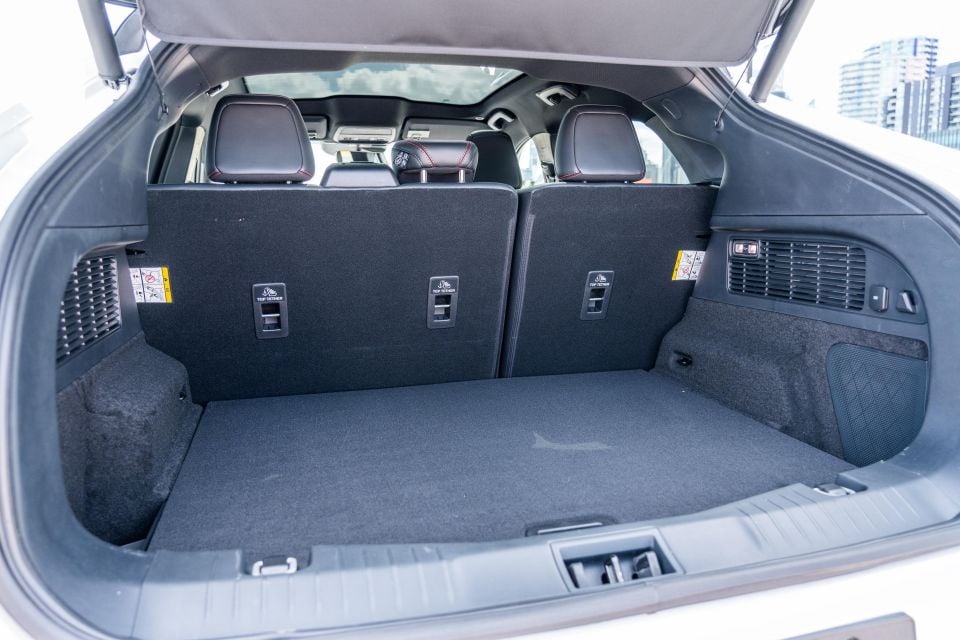
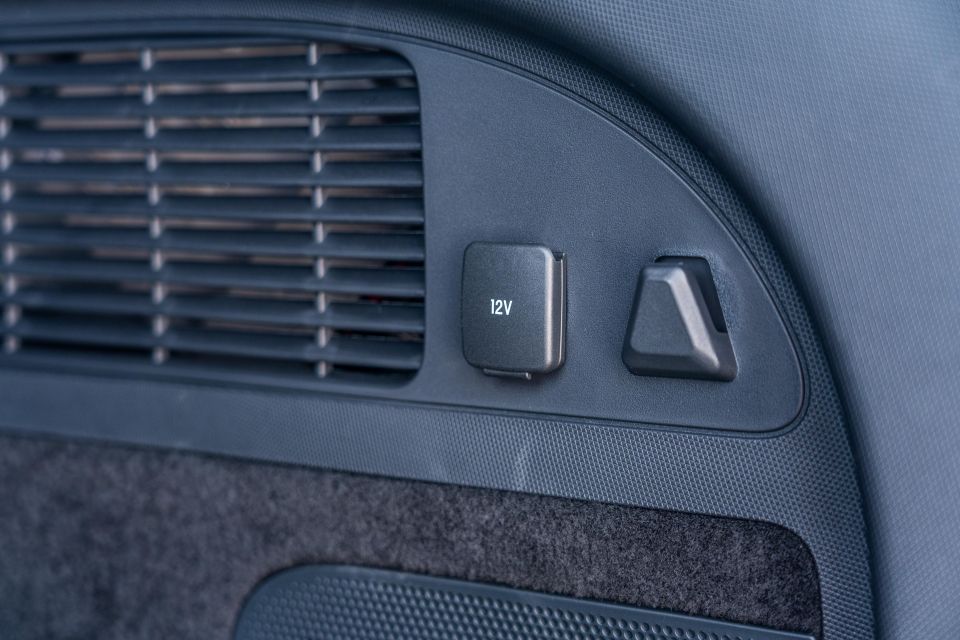
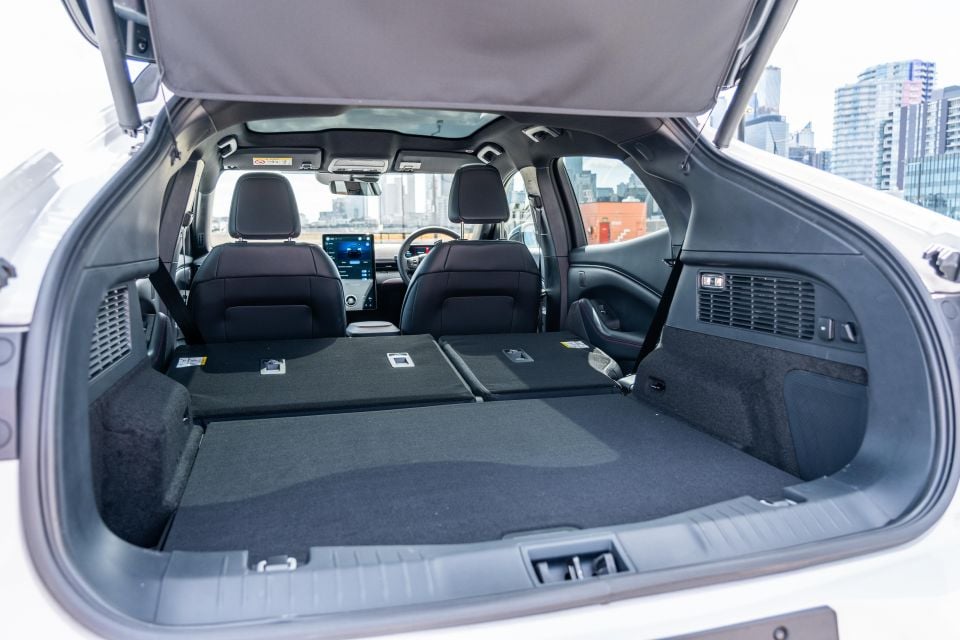

Boot capacity with the rear seats upright is 402 litres, which expands to 1420 litres with the second row folded. The rear bench folds in a 60/40 split configuration. As is common in EVs, there’s no spare tyre – you’ll find only a mobility kit below the boot floor.
All models include a 134L ‘frunk’ under the bonnet. The storage cavity is washable, drainable and waterproof, making the Mach-E ideal for tailgate (bonnet?) parties. For US regulatory reasons, there’s also an internal release so you can get out if you’re small enough to fit and somehow get stuck.
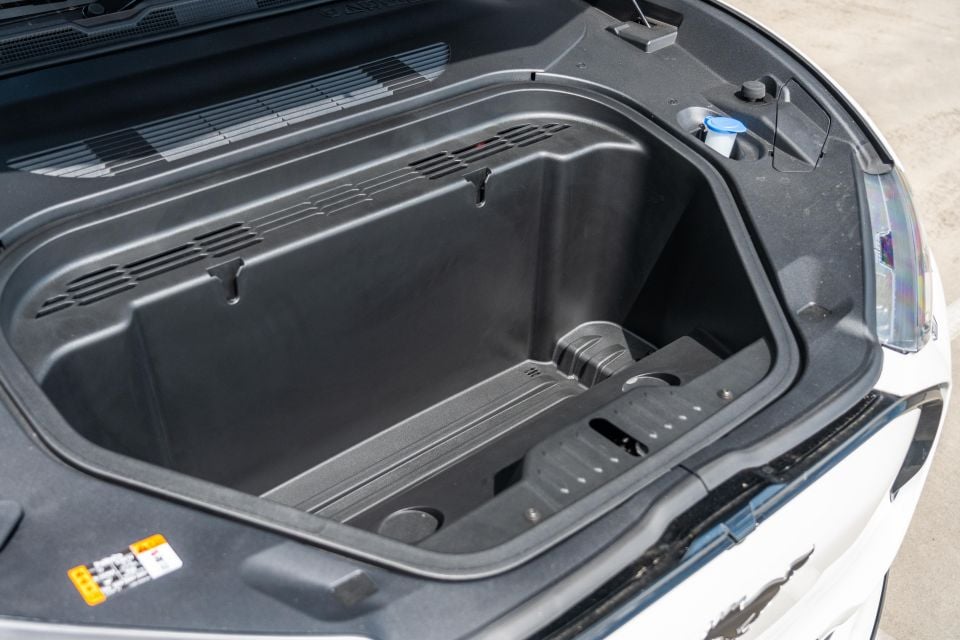
| Model | Mustang Mach-E Premium RWD |
|---|---|
| Power | 216kW |
| Torque | 430Nm |
| Battery | 91kWh li-ion NMC |
| Driven Wheels | Rear-wheel drive |
| Range | 600km (WLTP) |
| 0-100km/h | 6.2 seconds |
| Top Speed | N/A |
| Weight | 2098kg (kerb) |
| Energy consumption (claimed) | N/A |
| Energy consumption (as tested) | 15-18kWh/100km |
I’ll say this right away – don’t expect this to feel like an actual ‘Stang.

You fire the Mach-E up in relative silence, but there’s a trio of profiles that adjust the response and driving characteristics, as well as dialling in some synthesised drivetrain sounds.
I tended to stay in the Active mode, which offered a good balance between dynamics and comfort whilst also inducing an electrified drivetrain sound that seemed suitable for everyday driving without seeming forced.
While the Mustang Mach-E is a pretty new design that’s a bit of a step away from its other offerings, the electric crossover has a familiar feel on the road if you’ve ever driven a Ford Focus or Escape.
The steering is quick to respond and has a weighting that makes it feel nice and tight. It helps this mid-sized SUV shrink around you and feel more like a big hatchback behind the wheel.
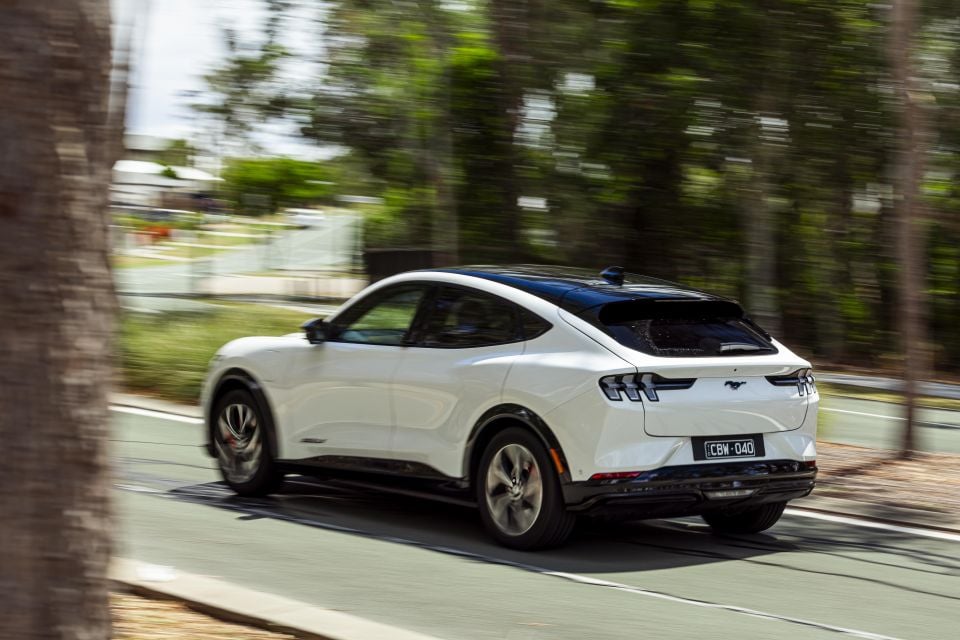
Keeping in mind the Mach-E Premium is 4728mm long, 1881mm wide, and weighs in at just under 2.1 tonnes, it feels pretty sprightly and dynamic – in keeping with its athletic bent.
It rides a little harder than other SUVs, including electric ones, which may not be to all tastes. The best way I can describe it that it has that planted, firm but damped feel of Ford’s hot hatches, if with a touch more compliance.
That firmer, tauter setup has a pretty European feel to it, and also helps the Mach-E to be a pretty sharp-feeling SUV even in this non-GT grade. If you like that sort of character, it could be a good point of difference to rivals.
It all helps to make the Mach-E a bit of fun to steer, giving you that nice and direct feel through mundane driving scenarios like city streets and roundabouts.
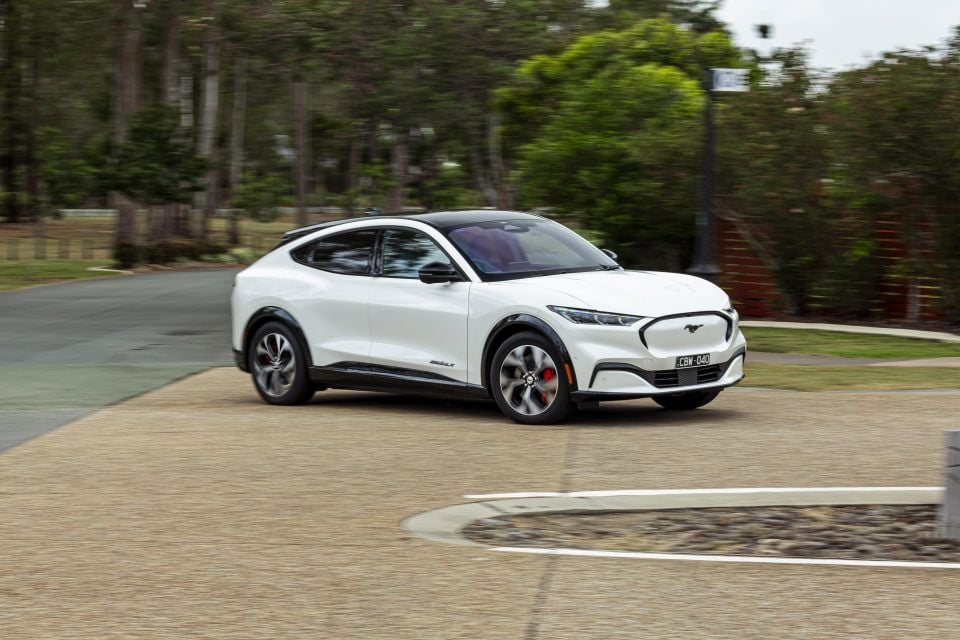
Performance in the Premium is also solid without being standout. Ford Australia quotes 6.2 seconds from 0-100km/h, so it’s brisk enough to keep up with most hot hatches.
Without being an all-out neck snapper, the Mach-E gets going nicely with strong acceleration when you ask for it. It also does a good job at not lighting up the rear tyres and breaking traction if you give it a nudge.
Plus, in the Active and Untamed modes the Mach-E pumps some fake drivetrain noise through the speakers to add some drama.
It also feels really settled and confident on the highway. Wind and road noise can get a little pronounced at higher speeds and over rougher tarmac, but it’s far from unrefined.
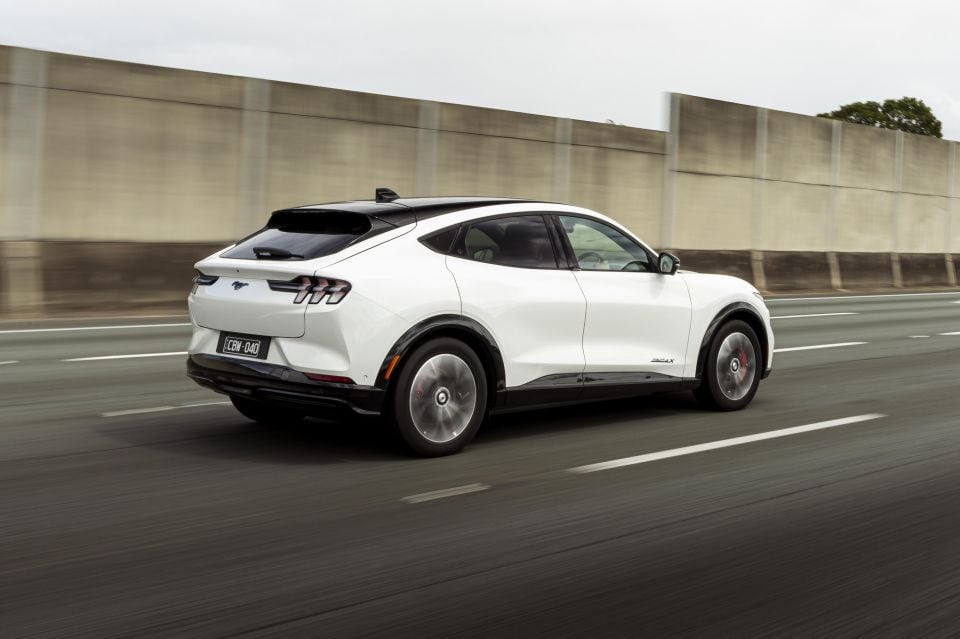
The Mach-E definitely makes for a capable tourer, aided by its adaptive cruise and lane centring functions that take the load off extended stints behind the wheel.
Ford’s driver assistance systems are pretty good at providing semi-autonomous driving capability without interfering too much as to preserve the driver experience. It’s the same case here.
Other headline assist features include blind-spot monitoring and rear cross-traffic alert, surround-view parking cameras, and speed sign recognition.
The projector-type LED headlights will also automatically dip the high-beams to not dazzle oncoming vehicles. It’s a shame there’s no proper adaptive high-beam or matrix function, though.
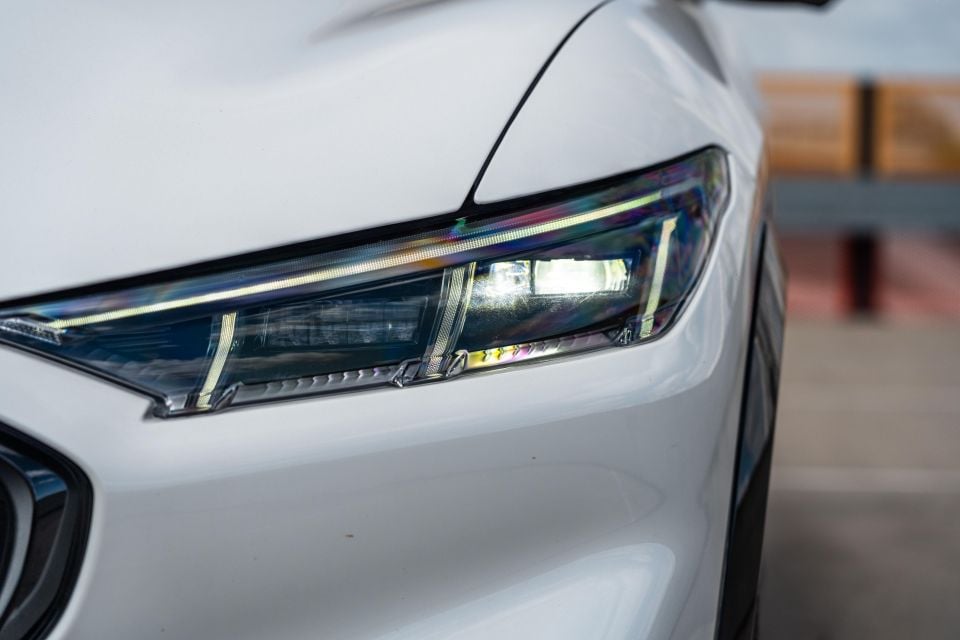
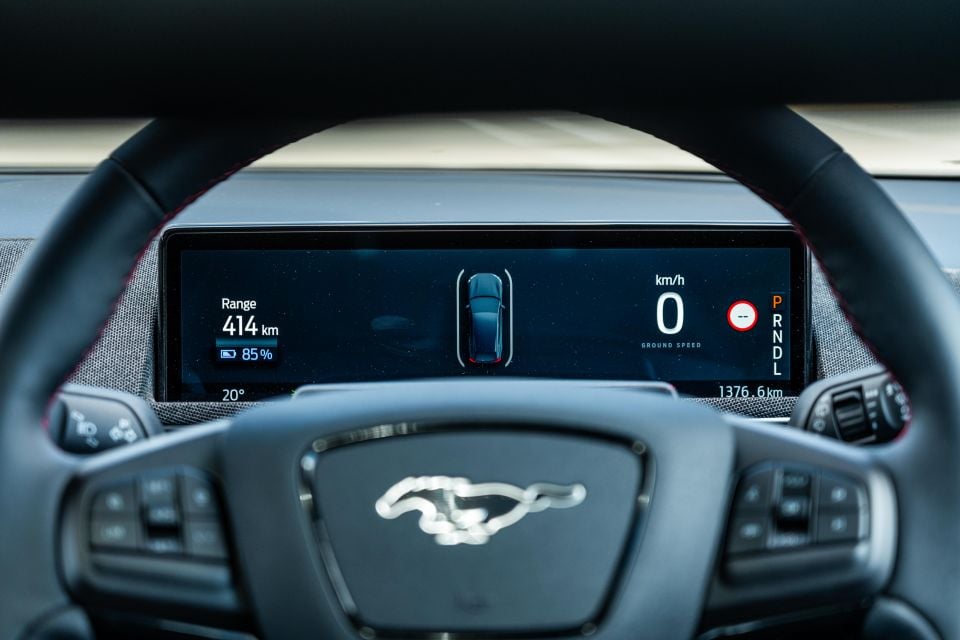
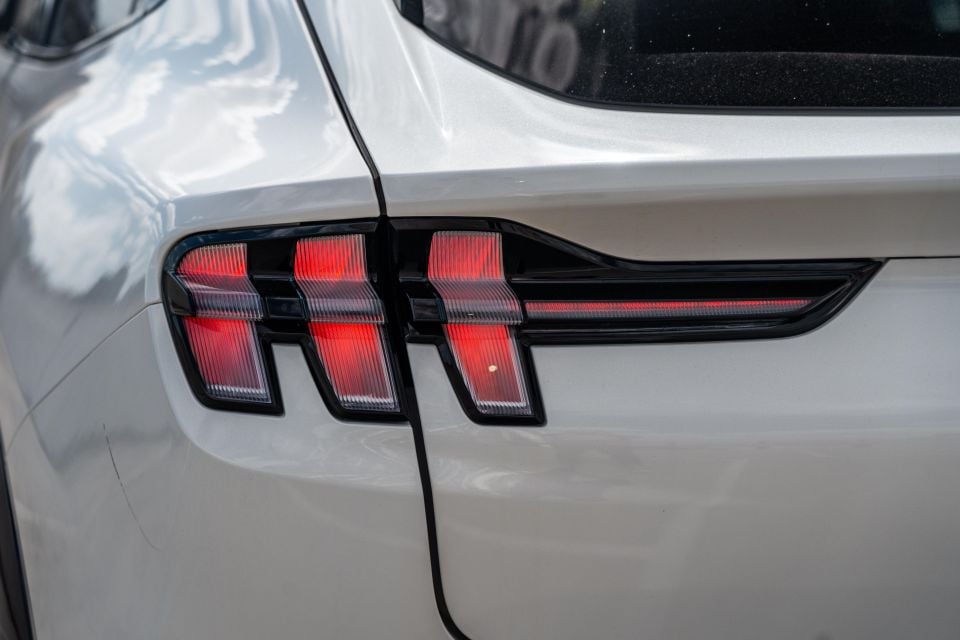
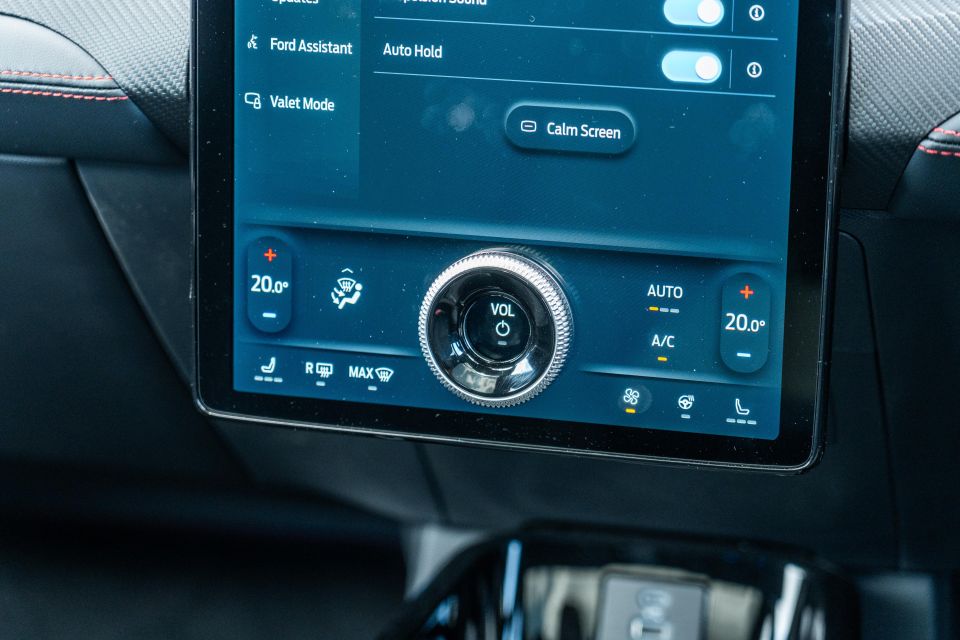
Where expert car reviews meet expert car buying – CarExpert gives you trusted advice, personalised service and real savings on your next new car.
Mach-E Select highlights:
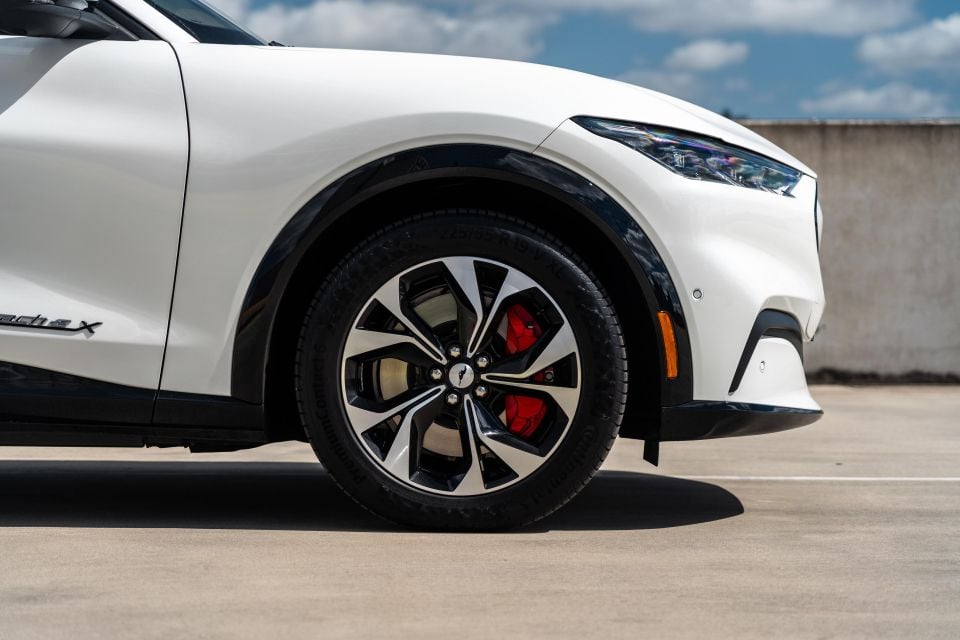
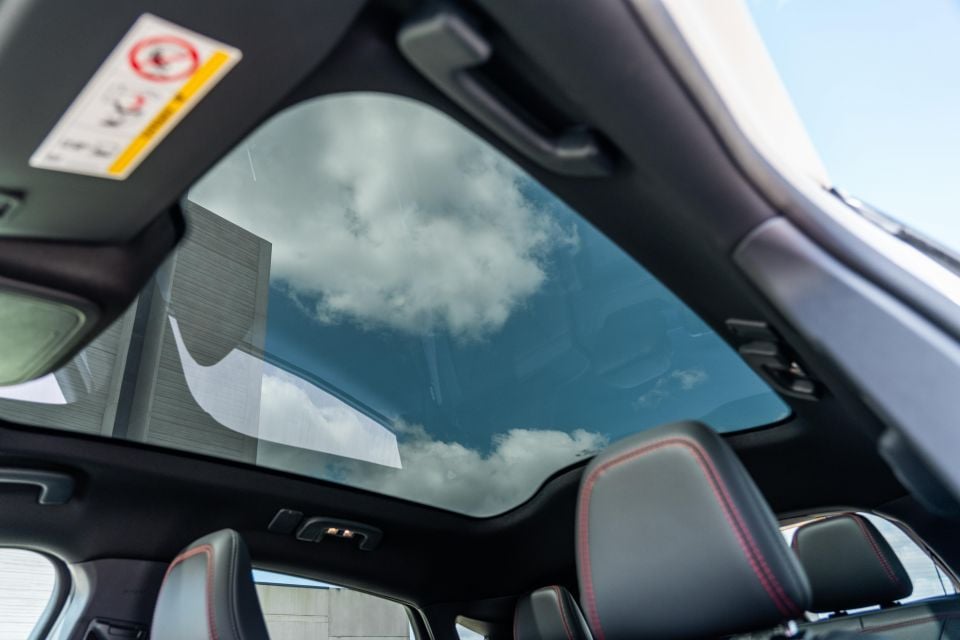
Mach-E Premium adds:
The Mustang Mach-E wears a five-star ANCAP safety rating based on Euro NCAP testing, though the GT is unrated – notably, the GT misses out on a front-centre airbag.
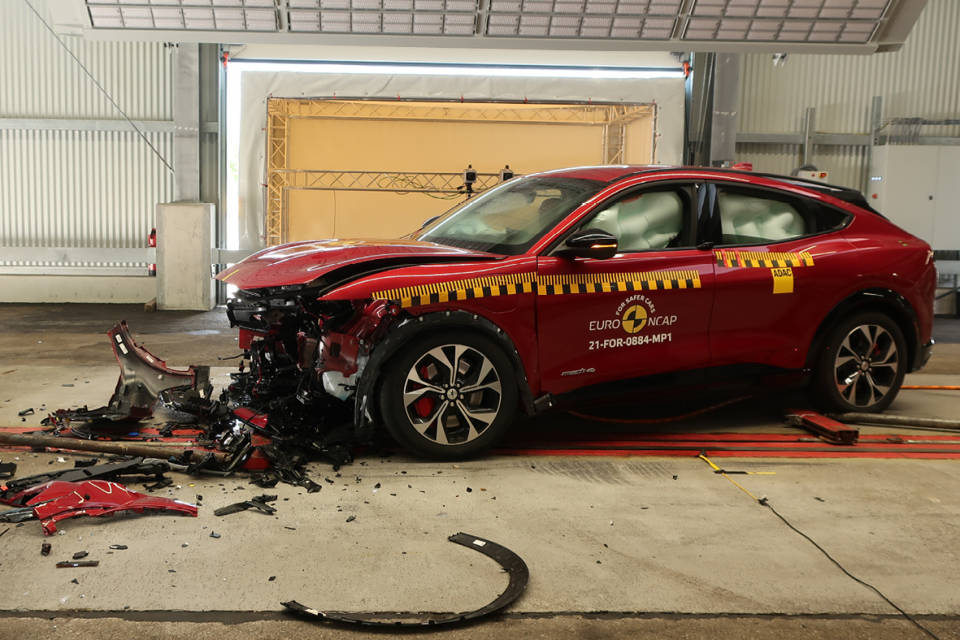
It received an adult occupant protection rating of 92 per cent, a child occupant protection rating of 86 per cent, a vulnerable road user protection of 69 per cent, and a safety assist rating of 86 per cent.
Standard safety features include:
The Mustang Mach-E is covered by a five-year, unlimited-kilometre vehicle warranty and an eight-year, 160,000km battery warranty.
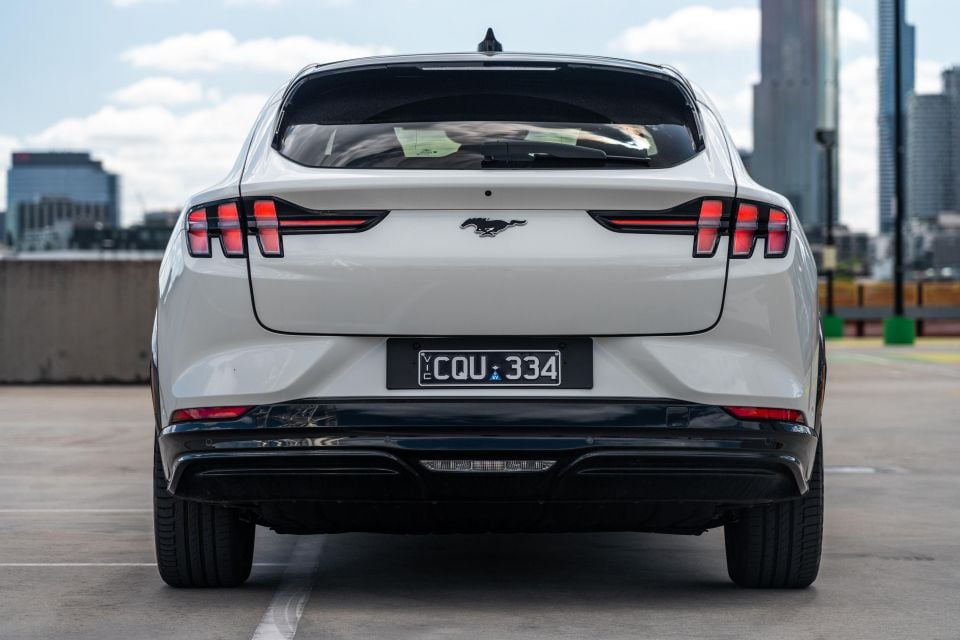
Servicing is required every 12 months or 15,000km. Ford provides service pricing for the first 10 years or 150,000km of ownership; with every second service priced at $180 and all other services priced at $135.
Ford, like most of the mainstream manufacturers, doesn’t offer a complementary subscription to public charger networks like Chargefox.
I was regularly seeing indicated energy consumption between 15-18kWh/100km, which is pretty impressive for a vehicle this size. At the lower end of that range, 600 kilometres between charges would actually be achievable.
The Select and GT’s nickel manganese cobalt (NMC) lithium-ion battery can be charged at 10.5kW using an AC charger, or up to 150kW using a DC fast charger.
At max rate, 10 to 80 per cent of charge can be replenished in 45 minutes. This is a bit slower than numerous rivals, particularly Tesla and Hyundai-Kia alternatives.
The Mach-E is impressive, but it didn’t really wow me given its strong competition.
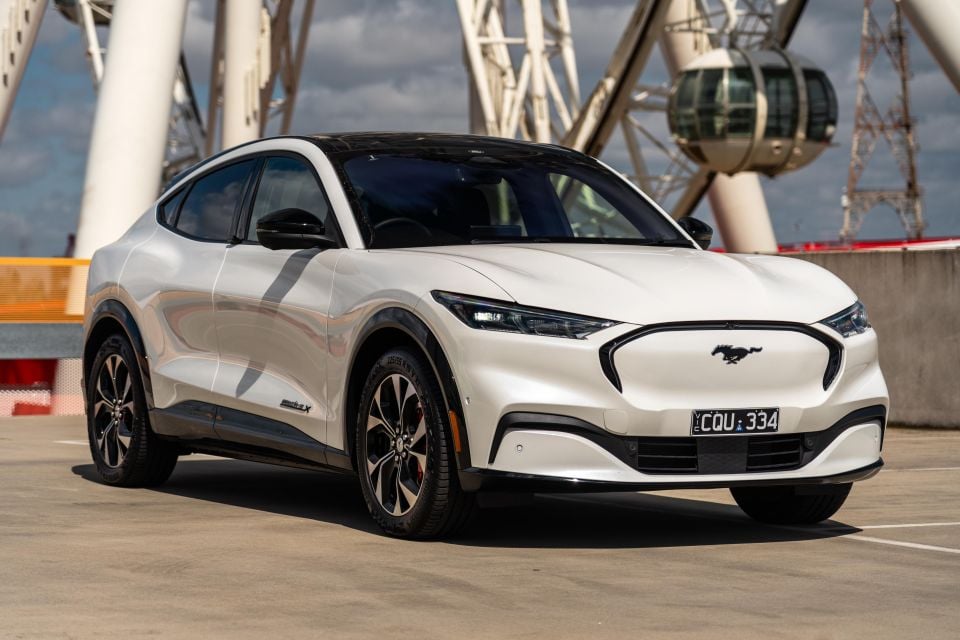
Following the price cuts, the Mach-E Premium tested here now falls under the FBT exemption for low- and zero-emission vehicles, providing one of the longest available (claimed) driving ranges for an EV in this price bracket. It’s still not cheap, but much more competitive than it was at launch.
Other than that, however, the Mach-E – particularly in white – is pretty generic and could easily be mistaken for something else. It’s not immediately recognisable as a Mustang, nor a Ford given there’s no Blue Oval badging.
The pared back and somewhat austere interior also do little to make the ‘Stang Mach-E stand out from the likes of Tesla.
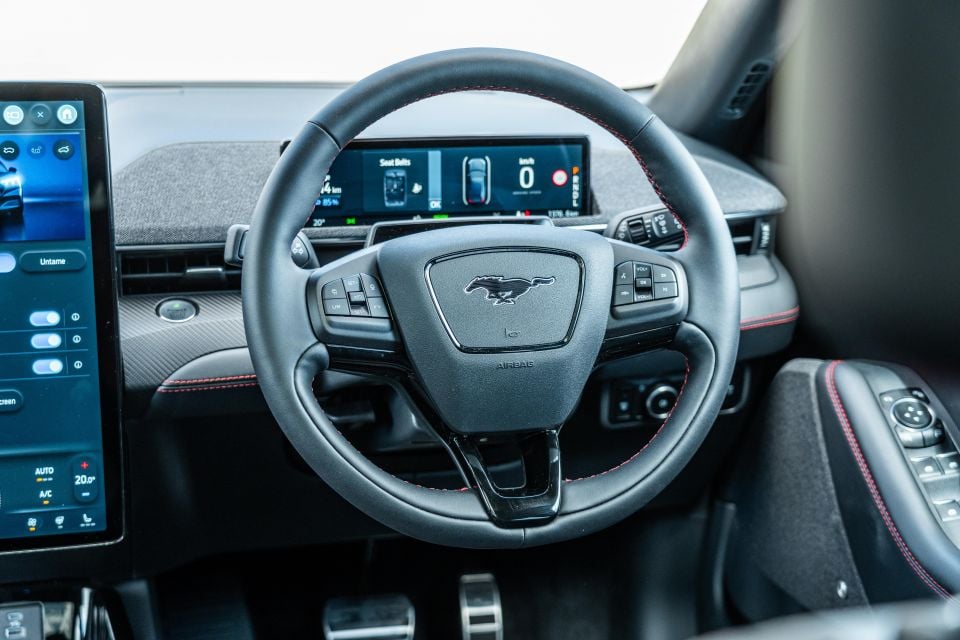
Certain elements like the under-bolstered seats and high ratio of parts shared with Ford’s entry-level models don’t make this feel like a $90,000 car either – though it’s not the only mainstream-branded EV to receive this criticism.
With that said, the Mach-E drives really nicely, as a lot of Ford’s other products do. It’s also got a solid list of standard equipment for your spend, and offers pretty much all the tech that Ford offers.
The fact it’s not a Tesla could also hold weight with some buyers, too. Worth a look if you want something different.
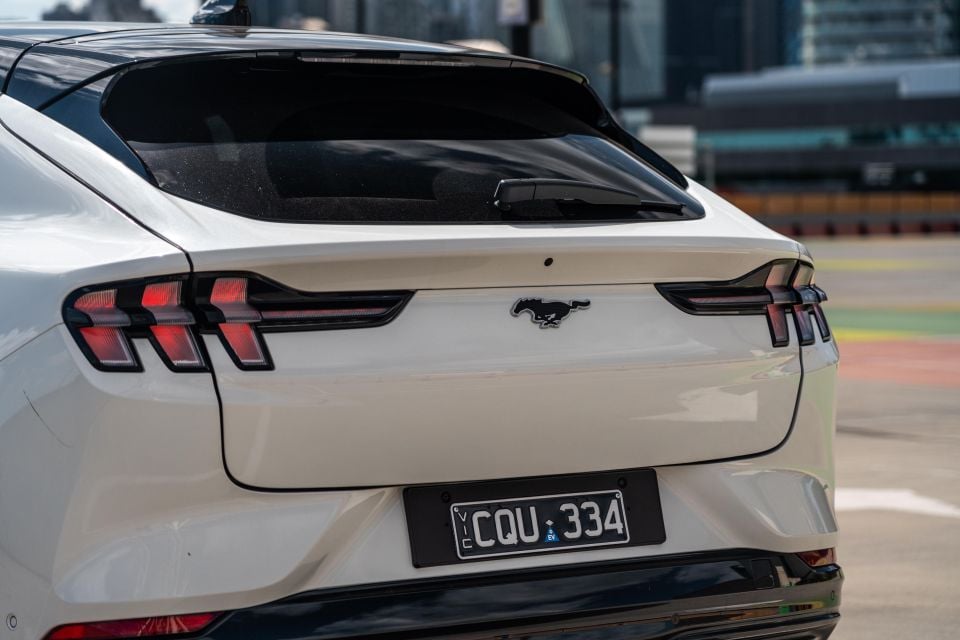
Click the images for the full gallery
BUY: Ford Mustang Mach-E MORE: Everything Ford Mustang Mach-E
Where expert car reviews meet expert car buying – CarExpert gives you trusted advice, personalised service and real savings on your next new car.
James Wong is an automotive journalist and former PR consultant, recognised among Australia’s most prolific motoring writers.


Matt Campbell
38 Minutes Ago


Ben Zachariah
17 Hours Ago


Damion Smy
18 Hours Ago
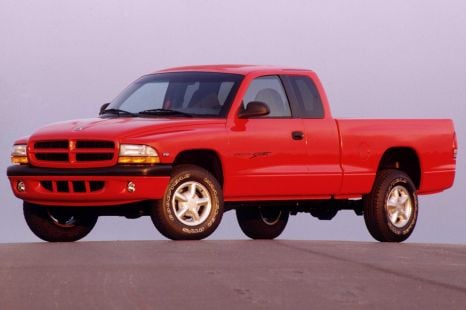

Derek Fung
18 Hours Ago


Ben Zachariah
19 Hours Ago
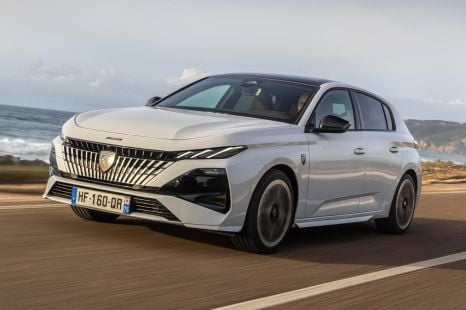

Matt Robinson
1 Day Ago